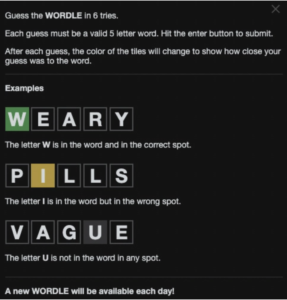
Are you playing Wordle?
Millions around the world have caught on to this viral sensation of a game. The goal of Wordle is simple- figure out a 5-letter word in 6 guesses or fewer. Each day the word is different but with one word a day, and the same word for everyone playing, the aim is a collective one. Josh Wardle (Wordle fans will note, Wardle’s last name is one letter off from the game’s name and probably not by accident) created the game for his wife and, initially, meant for it to be just for the two of them. In early 2021, the game went public and by December 2021 it had gone viral.
No downloads or app stores are needed–Wordle is played directly off any web browser. According to a poll published in Forbe’s an estimated 14% of American adults are playing Wordle, and of those, 26% are millennials.
We asked marketing leaders across the world why they think Wordle has been such a success.
From a marketing perspective, why has Wordle been such a runaway success?
What went right?
Why does the game resonate right now?
What can others in digital marketing learn from its success?
Here is what they said:
Wordle has captivated people by leveraging some important marketing levers that can be effectively used by all digital marketers. Its creator, Wardle, has made sharing your Wordle results extremely easy, giving birth to the iconic green-and-yellow grid we all recognize now. Additionally, the fact that we all get the same word and only one per day simultaneously creates manufactured scarcity (think of when Gmail was originally invitation-only) and a globally shared experience (we all are thinking of the same word through the day).
Not all levers mentioned will be available to marketers, and not all will work. Remember Google Wave and its invite-only tactic? Yeah, me neither. However, Wordle’s success is proof that these age-old tactics can – and do – work.
Esteban Largaespada, Digital Ads Director, Online Optimism
This basic, simple yet challenging game ticks all the boxes for a runaway viral success. The current culture of immediacy makes the 24-hour wait for the next iteration of the game, almost painful: Wordle is addictive!
With only six tries to guess the correct 5 letter word: getting it right requires some strategy. There are probably as many strategies as there are five-letter words in the English language. Everyone wants to share their strategy. There’s a calculated winning streak, which ups the gamification, something that marketers can consider building into their opt-in giveaways and loyalty-type programs.
And of course who doesn’t want to show off your score? The faster you solve Wordle, the better a player you are. And you get a screenshot of your game that can be posted on your socials, thereby inciting FOMO in your friends…
The joy of winning gives you a quick dopamine hit…and that’s what keeps you coming back day after day. Marketers who can add that dopamine hit to their ads, and landing pages will have found the holy grail.
Elaine Lindsay, Social Optimization Specialist, Speaker, Partner, TROOL Social Media
In a world of on-demand and personalization, there is something that Wordle has tapped into, perhaps unconsciously, and that’s our innate desire for shared experience, to feel a part of something, community. Friends, families, colleagues are competing to solve the same puzzle within the same day and congratulate – or commiserate – each other’s efforts.
Wordle has mass-appeal difficulty, tuning the difficulty level just right to allow anyone in the world to engage and most importantly solve enjoying that immediate gratification. It has limited content, with just one word to solve every day, the scarcity actually creates intrigue and keeps users wanting for more & coming back the next day again.
Sundus Shahid Bari, Associate Director of Strategy & Planning, Blitz Advertising
I love two things they did from a marketing perspective:
1. The wait- In the world of instant gratification and binge-watches, Wordle allows us only one game in 24 hours. We don’t burn through it and keep waiting and wanting more. This keeps the interest alive.
2. The social share – Josh Wardle himself praised the social share option that allows one to brag without giving away the answer for everyone else. He called it one of the best features and I agree. The visual impact of the share allows us to show off the performance at a glance without giving off our strategies or errors. A simple 4/6 wouldn’t have done the job. The grey, yellow and green is a much better way to share!
The wait creates anticipation while the social share provides gratification, validation and allows Wordle-rs to compare notes. Simple and effective.
What can markters learn?
1. We all know that social sharing is an integral part of any product’s marketing success. Wordle used social sharing in a way unique to the product.
2. Start with a small group of people and let the product attract more users. There need not be a very heavy investment into marketing
3. A great origin story must be retold, especially if has an element of romance.
Ankita Bhatia Dhawan, Director Outbound Marketing, Touchstorm
Although the replies we’ve received have varied, there seems to be a consensus that Wordle’s success comes from a combination of factors including the limited availability of one word each day, the ability to share your results online across social platforms, the ease of entry in having it web-based, and a difficulty level that has mass appeal.
What can marketers across the sector learn from Wordle? Sometimes keeping it simple can lead to a win!
Subscribe to the ClickZ newsletter for insights on the evolving marketing landscape, performance marketing, customer experience, thought leadership, videos, podcasts, and more.
Join the conversation with us on LinkedIn and Twitter.
The post Why Wordle is winning appeared first on ClickZ.
Source: ClickZ
Link: Why Wordle is winning


